The Yukon Territory is a vast and rugged region located in northwestern Canada. It is bordered by Alaska to the west, the Northwest Territories to the east, and British Columbia to the south.
The Yukon is known for its pristine wilderness, breathtaking landscapes, and unique wildlife. The region experiences a subarctic climate, with long, cold winters and short, mild summers.
Despite the harsh weather conditions, the Yukon is home to a diverse range of animals, including caribou, moose, wolves, grizzly bears, and lynx. The region’s natural environment is largely untouched by human activity, making it a haven for wildlife and a popular destination for outdoor enthusiasts.
.
Types Of Ants In Yukon Territory, Canada
The Types Of Ants In Yukon Territory, Canada are listed here: Funnel Ants, Rover Ants, Carpenter And Sugar Ants, Wood Ants, Formicoxenus, Harpagoxenus, Moisture Ants, Leptothorax, Furrowed Ants, Amazon Ants, Tapinoma, Slave-Making Ants, Hercules Ants, Red-Bearded Mound Ants, Leptothorax Retractus, Furrowed Ants.
If you’ve found some other ants in this region, contact us, and we will add them to the list!
1) Funnel Ants, Aphaenogaster
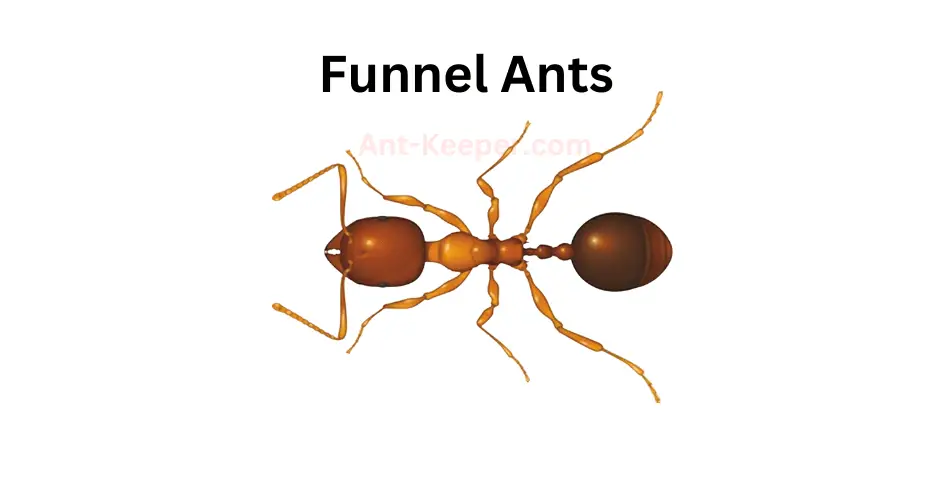
The Funnel Ants, also known as Aphaenogaster ants, are a species of ants that are commonly found in various habitats around the world.
These ants are known for their unique nesting behavior, where they construct funnel-shaped nests that are typically located in soil or leaf litter.
The Funnel Ants are relatively small in size, with workers measuring between 3-5mm in length.
They are typically reddish-brown in color and have a slender body shape.
These ants are known for their strong mandibles, which they use to collect and transport food back to their nests.
One of the most interesting aspects of the Funnel Ants is their nesting behavior.
These ants construct funnel-shaped nests that are typically located in soil or leaf litter.
The entrance to the nest is narrow and funnel-shaped, which helps to protect the colony from predators and other threats.
Inside the nest, the ants create a series of chambers and tunnels that are used for different purposes, such as storing food, caring for the brood, and housing the queen.
The Funnel Ants are omnivorous, meaning that they feed on both plant and animal matter.
They are known to collect a wide variety of food items, including seeds, insects, and other small invertebrates.
These ants are also known to tend to aphids, which they use for their honeydew secretion.
Overall, the Funnel Ants are a fascinating species of ants that are known for their unique nesting behavior and omnivorous diet.
They play an important role in their ecosystems, helping to control populations of other insects and contributing to nutrient cycling in the soil.
2) Rover Ants, Brachymyrmex

Rover ants, also known as Brachymyrmex spp., are a species of small, dark-colored ants that are commonly found in urban and suburban areas.
These ants are known for their ability to quickly move their nests from one location to another, hence their name "rover ants."
Rover ants are typically between 1.5 and 2.5 millimeters in length and have a dark brown or black coloration.
They have a slender body with a distinct waist and long, thin legs.
These ants are known for their aggressive behavior towards other ant species and will often invade and take over their nests.
Rover ants are omnivorous and will feed on a variety of food sources, including insects, sweets, and plant material.
They are also known to be attracted to human food and can become a nuisance in homes and other buildings.
One unique characteristic of rover ants is their ability to form "supercolonies." These supercolonies can consist of multiple nests and can span large areas.
This behavior allows rover ants to quickly adapt to changing environments and find new food sources.
Overall, rover ants are a common and adaptable species that can be found in many different environments.
While they can be a nuisance in homes and other buildings, they play an important role in the ecosystem as scavengers and predators of other insects.
3) Carpenter And Sugar Ants, Camponotus

Carpenter ants and sugar ants are two common species of ants found in many regions of the world.
Carpenter ants are known for their ability to excavate wood and create nests within it.
They are typically larger in size than sugar ants and have a black or dark brown coloration.
Carpenter ants are also known for their strong mandibles, which they use to chew through wood and other materials.
Sugar ants, on the other hand, are smaller in size and have a yellow or brown coloration.
They are named for their preference for sugary foods and are often found in kitchens and other areas where food is stored.
Sugar ants are also known for their ability to form large colonies, with thousands of individual ants working together to gather food and care for their young.
Both carpenter ants and sugar ants play important roles in their ecosystems.
Carpenter ants help to break down dead wood and other plant material, which helps to recycle nutrients back into the soil.
Sugar ants help to disperse seeds and pollinate plants, which helps to maintain healthy ecosystems.
However, both species can also be pests when they invade human homes and buildings.
Carpenter ants can cause damage to wooden structures, while sugar ants can contaminate food and be a nuisance to homeowners.
It is important to take steps to prevent ant infestations and to control them if they do occur, in order to protect both human health and the health of the environment.
4) Wood Ants, Formica

Wood ants, also known as carpenter ants, are a species of ant that belong to the genus Camponotus.
They are widely distributed throughout the world and are commonly found in forests and woodlands.
These ants are known for their ability to excavate wood and create nests inside trees, logs, and other wooden structures.
Wood ants are typically large in size, with workers ranging from 6 to 13 millimeters in length.
They are usually black or brown in color and have a smooth, shiny exoskeleton.
These ants have strong mandibles that they use to chew through wood and defend their nests.
Wood ants are social insects that live in colonies consisting of a queen, workers, and soldiers.
The queen is responsible for laying eggs, while the workers and soldiers are responsible for maintaining the nest and protecting it from predators.
These ants communicate with each other using chemical signals called pheromones.
Wood ants are omnivores and feed on a variety of food sources, including insects, honeydew, and plant sap.
They are also known to scavenge for food and will sometimes raid the nests of other ant species.
Despite their ability to excavate wood, wood ants are not considered pests.
In fact, they play an important role in forest ecosystems by helping to decompose dead wood and recycle nutrients.
They also serve as a food source for many other animals, including birds, mammals, and other insects.
Overall, wood ants are fascinating creatures that have adapted to live in a unique habitat.
Their ability to excavate wood and create nests inside trees is a testament to their ingenuity and resourcefulness.
5) Formicoxenus

Formicoxenus is a genus of ants belonging to the subfamily Myrmicinae.
The ants in this genus are small in size, measuring between 1.5 to 3 millimeters in length.
They are known for their distinctive morphology, which includes a narrow waist and a large head with long mandibles.
Formicoxenus ants are typically found in forested areas, where they live in small colonies under rocks, logs, or in leaf litter.
They are known to be highly specialized, with each species having a specific host ant species that they parasitize.
The Formicoxenus ants are social parasites, meaning that they rely on their host ants for food and shelter.
The reproductive strategy of Formicoxenus ants is unique.
The queen ant will infiltrate the host colony and kill the resident queen.
She will then lay her eggs in the host colony, which will be raised by the host workers.
The Formicoxenus larvae will then feed on the host ant larvae and pupae, ensuring their survival.
Formicoxenus ants are important members of forest ecosystems, as they play a role in controlling the population of their host ants.
They are also important indicators of forest health, as their presence can indicate the presence of healthy forest ecosystems.
6) Harpagoxenus

Harpagoxenus is a genus of ants belonging to the subfamily Myrmicinae.
The species Harpagoxenus can be identified by its small size, measuring only a few millimeters in length.
They have a dark brown to black coloration and a slender body shape.
Harpagoxenus ants are known for their unique social behavior.
They are considered to be social parasites, meaning they rely on other ant species to raise their young.
Harpagoxenus queens will invade the nests of other ant species and lay their eggs among the host colony's brood.
The Harpagoxenus larvae will then be fed and cared for by the host workers until they reach adulthood.
Once the Harpagoxenus workers emerge, they will begin to take over the host colony.
They will kill the host queen and force the remaining workers to care for their young.
The Harpagoxenus workers will also take over the food resources of the host colony, ensuring their own survival.
Harpagoxenus ants are found in a variety of habitats, including forests, grasslands, and deserts.
They are most commonly found in areas with high ant diversity, as they rely on other ant species for their survival.
Overall, Harpagoxenus ants are fascinating creatures with unique social behavior.
Their reliance on other ant species for survival makes them an important part of the ecosystem and highlights the complex interactions between different species in nature.
7) Moisture Ants, Lasius
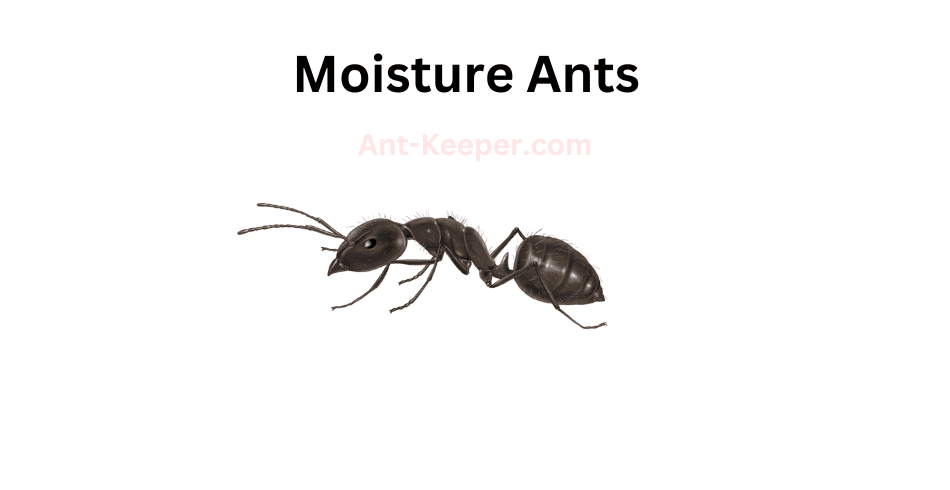
Moisture ants are a type of ant that is commonly found in damp environments.
They are known for their ability to thrive in areas with high levels of moisture, such as in rotting wood or in soil that is constantly moist.
These ants are typically small in size, measuring only a few millimeters in length, and are usually yellow or brown in color.
Moisture ants are social insects that live in colonies, with each colony consisting of a queen, workers, and soldiers.
The queen is responsible for laying eggs, while the workers and soldiers are responsible for maintaining the colony and protecting it from predators.
One of the unique characteristics of moisture ants is their ability to create satellite colonies.
These colonies are established in nearby locations and are connected to the main colony by a network of tunnels.
This allows the ants to expand their territory and increase their chances of survival.
Moisture ants are also known for their ability to control the moisture levels in their environment.
They do this by building intricate nests that are designed to regulate the humidity levels inside.
This is important for the survival of the colony, as too much moisture can lead to the growth of harmful fungi and bacteria.
Overall, moisture ants are fascinating creatures that have adapted to thrive in environments that would be inhospitable to many other species.
Their ability to control moisture levels and create satellite colonies makes them a formidable force in their ecosystem.
8) Leptothorax
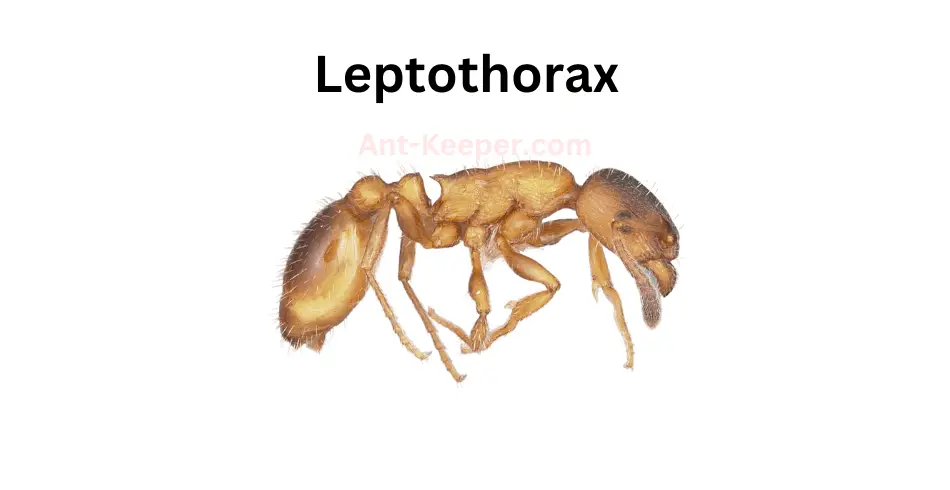
Leptothorax is a genus of ants that belongs to the family Formicidae.
These ants are small in size, measuring between 2 to 4 millimeters in length.
They are commonly found in forests, grasslands, and other natural habitats.
Leptothorax ants are known for their social behavior, as they live in colonies that can range from a few dozen to several hundred individuals.
These ants have a hierarchical social structure, with a queen ant at the top and worker ants at the bottom.
The queen ant is responsible for laying eggs, while the worker ants take care of the young, gather food, and defend the colony from predators.
One interesting feature of Leptothorax ants is their ability to form temporary colonies with other ant species.
This behavior is known as "temporary social parasitism," and it allows Leptothorax ants to benefit from the resources of other ant colonies without having to invest in their own colony infrastructure.
Leptothorax ants are also known for their ability to navigate through complex environments.
They use a combination of visual cues and chemical signals to find their way back to the colony after foraging for food.
Overall, Leptothorax ants are fascinating creatures that play an important role in their ecosystems.
Their social behavior and navigational abilities make them a subject of interest for scientists studying animal behavior and ecology.
9) Furrowed Ants, Myrmica

Furrowed ants, also known as Pheidole ruginoda, are a species of ant that belong to the family Formicidae.
These ants are commonly found in various habitats such as forests, grasslands, and deserts.
They are known for their distinctive appearance, with a furrowed head and thorax, and a smooth and shiny abdomen.
Furrowed ants are social insects that live in colonies, which can range in size from a few hundred to several thousand individuals.
The colony is typically headed by a queen ant, whose primary role is to lay eggs.
The workers, which are sterile females, are responsible for foraging, nest maintenance, and caring for the young.
These ants are omnivorous, meaning they feed on both plant and animal matter.
Their diet consists of seeds, insects, and other small invertebrates.
They are also known to tend to aphids, which produce a sugary substance that the ants feed on.
Furrowed ants are known for their aggressive behavior, and will defend their colony fiercely against intruders.
They have been observed engaging in territorial battles with other ant species, and will even attack larger insects such as grasshoppers and beetles.
Overall, furrowed ants are an important part of many ecosystems, playing a crucial role in seed dispersal and soil aeration.
Their unique appearance and behavior make them a fascinating subject for study and observation.
10) Amazon Ants, Polyergus
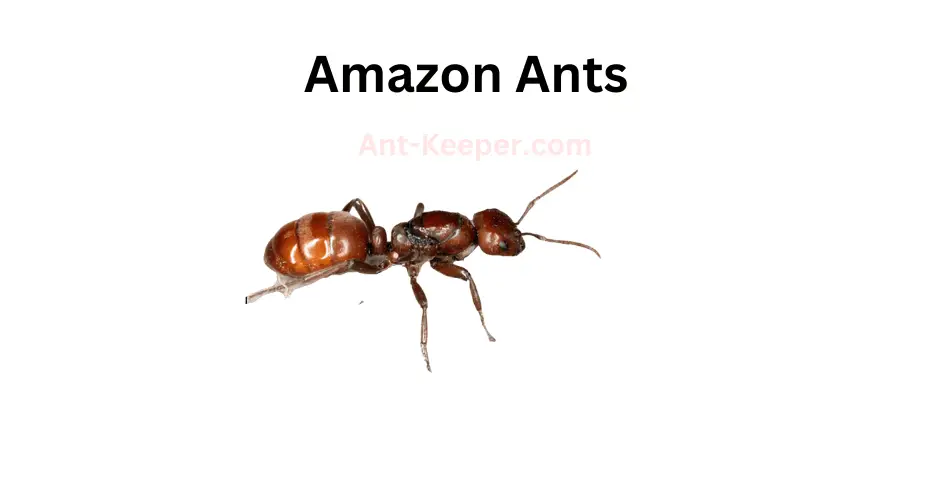
The Amazon Ant, also known as the Polyergus breviceps, is a species of ant that belongs to the Formicidae family.
These ants are known for their unique behavior of raiding other ant colonies and stealing their brood to raise as their own.
The Amazon Ants are typically black or dark brown in color and have a slender body with long legs.
They are relatively small in size, with workers measuring around 4-5 mm in length.
The queen ants are slightly larger, measuring around 7-8 mm in length.
These ants are social insects and live in large colonies that can consist of thousands of individuals.
The colonies are usually divided into different castes, including workers, soldiers, and reproductive ants.
The workers are responsible for foraging, caring for the brood, and maintaining the nest, while the soldiers defend the colony from predators.
One of the most interesting aspects of the Amazon Ants is their unique behavior of raiding other ant colonies.
They do this by sending out a group of specialized workers, known as raiders, to infiltrate the target colony.
The raiders then steal the brood of the target colony and bring it back to their own nest.
Once the stolen brood hatches, the Amazon Ants use it to increase their own workforce.
The Amazon Ants are also known for their symbiotic relationship with a species of butterfly known as the Maculinea rebeli.
The butterfly larvae feed on the brood of the Amazon Ants, but in return, they secrete a substance that makes the ants more aggressive and better at raiding other colonies.
Overall, the Amazon Ants are fascinating creatures with unique behaviors and adaptations that allow them to thrive in their environment.
11) Tapinoma

Tapinoma is a genus of ants that belongs to the family Formicidae.
The species Tapinoma is a small ant that measures about 2-3 mm in length.
They are commonly found in urban and suburban areas, and are known to invade homes and buildings in search of food and shelter.
Tapinoma ants are light brown in color and have a slender body with long legs.
They have a distinctively shaped head that is wider than their thorax, and they possess a pair of antennae that are bent at a right angle.
These ants are known for their ability to form large colonies, which can consist of thousands of individuals.
Tapinoma ants are omnivorous and feed on a variety of food sources, including insects, nectar, and honeydew.
They are also known to scavenge for food in garbage cans and other waste areas.
These ants are attracted to sweet and sugary substances, and will often invade kitchens and pantries in search of food.
Tapinoma ants are not known to be aggressive towards humans, but they can become a nuisance when they invade homes and buildings.
They are known to build their nests in wall voids, under floors, and in other hidden areas.
If left unchecked, these ants can cause damage to structures and can contaminate food sources.
Overall, Tapinoma ants are a common pest in many parts of the world.
While they are not harmful to humans, they can be a nuisance when they invade homes and buildings.
Proper pest control measures can help to prevent infestations and keep these ants at bay.
12) Slave-Making Ants, Temnothorax
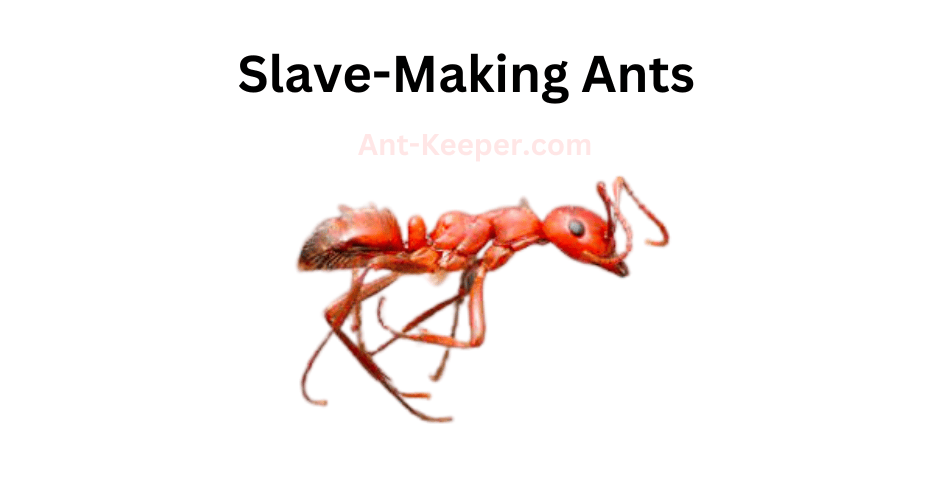
The Slave-Making Ants, also known as Dulosis ants, are a group of social insects that engage in a unique behavior of raiding and enslaving other ant colonies.
These ants belong to the subfamily Formicinae and are found in various parts of the world.
The Slave-Making Ants have a complex social structure, with a queen, workers, and soldiers.
The queen is responsible for laying eggs, while the workers and soldiers carry out various tasks such as foraging, nest building, and defense.
However, unlike other ant species, the Slave-Making Ants do not rely solely on their own colony for survival.
Instead, these ants raid nearby colonies of other ant species, using their superior strength and numbers to overpower the defenders.
The Slave-Making Ants then carry off the pupae of the conquered colony back to their own nest.
Once the pupae hatch, they are raised by the Slave-Making Ants and forced to work as slaves for the colony.
The Slave-Making Ants have evolved a number of adaptations to facilitate their slave-raiding behavior.
For example, they have a highly developed sense of smell, which allows them to locate and target specific ant colonies.
They also have strong mandibles and powerful stingers, which they use to subdue their prey.
Despite their aggressive behavior, the Slave-Making Ants play an important role in their ecosystem.
By raiding other ant colonies, they help to control the population of competing ant species.
Additionally, the enslaved ants provide a source of food and labor for the Slave-Making Ants, allowing them to thrive in environments where resources are scarce.
Overall, the Slave-Making Ants are a fascinating and unique species of ant, with a complex social structure and a highly specialized behavior.
While their slave-raiding behavior may seem cruel, it is an important part of their survival strategy and has helped them to thrive in a variety of environments.
13) Hercules Ants, Camponotus Herculeanus
The Hercules ant, also known as Dinoponera gigantea, is a species of ant that belongs to the family of Ponerinae.
These ants are known for their large size, with the workers measuring up to 3.5 cm in length, making them one of the largest ant species in the world.
Hercules ants are typically found in tropical rainforests, where they live in underground nests.
These nests can be quite extensive, with multiple chambers and tunnels that can extend several meters underground.
The ants are known for their aggressive behavior and will fiercely defend their nests against any intruders.
One of the most interesting features of the Hercules ant is their powerful mandibles.
These mandibles are so strong that they can easily crush the exoskeletons of other insects, making them formidable predators.
The ants are also known to hunt larger prey, such as spiders and scorpions.
Despite their aggressive behavior, Hercules ants are also known for their social behavior.
They live in colonies that can number in the hundreds, with a strict hierarchy that determines the roles of each individual ant.
The queen ant is responsible for laying eggs, while the workers are responsible for foraging, caring for the young, and defending the nest.
Overall, the Hercules ant is a fascinating species that has captured the attention of scientists and nature enthusiasts alike.
Their impressive size and strength make them a formidable predator, while their complex social behavior adds to their intrigue.
14) Red-Bearded Mound Ants, Formica Neorufibarbis
The Red-Bearded Mound Ants, scientifically known as Formica rufibarbis, are a species of ant that belong to the Formicidae family.
These ants are known for their distinctive red-colored beard-like hairs on their faces, which is where they get their common name from.
Red-Bearded Mound Ants are typically found in open areas such as meadows, fields, and forests.
They are known to build large mounds made of soil and plant material, which can reach up to 60 cm in height.
These mounds serve as their nests and can house thousands of ants.
These ants are social insects and live in colonies that are organized into a caste system.
The queen ant is responsible for laying eggs, while the worker ants are responsible for foraging for food, caring for the young, and defending the colony.
The males are only present during the mating season.
Red-Bearded Mound Ants are omnivorous and feed on a variety of food sources including insects, nectar, and honeydew.
They are also known to tend to aphids, which produce honeydew that the ants feed on.
These ants play an important role in their ecosystem as they help to control the population of other insects and serve as a food source for other animals such as birds and small mammals.
However, they can also be considered pests as they can damage crops and invade homes.
Overall, the Red-Bearded Mound Ants are a fascinating species of ant that are known for their unique appearance and important role in their ecosystem.
15) Leptothorax Retractus
Leptothorax Retractus is a species of ant belonging to the Formicidae family.
These ants are small in size, measuring between 2.5 to 3.5 millimeters in length.
They are typically black or dark brown in color, with a shiny and smooth exoskeleton.
Leptothorax Retractus ants are known for their unique nesting behavior.
They are social insects that live in small colonies consisting of a few dozen to a few hundred individuals.
These ants prefer to nest in small crevices or cracks in rocks, logs, or soil.
They are also known to nest in the hollow stems of plants.
These ants are omnivorous, feeding on a variety of food sources including insects, nectar, and honeydew.
They are also known to scavenge for dead insects and other organic matter.
Leptothorax Retractus ants have a unique reproductive system.
They are haplodiploid, meaning that females develop from fertilized eggs and males develop from unfertilized eggs.
This system allows for the production of more females, which are essential for the survival and growth of the colony.
Overall, Leptothorax Retractus ants are fascinating creatures with unique nesting behavior and reproductive systems.
They play an important role in their ecosystem as predators and scavengers, and their small size makes them an important food source for many other animals.
16) Furrowed Ants, Myrmica Alaskensis

Furrowed ants, also known as Pheidole ruginoda, are a species of ant that belong to the family Formicidae.
These ants are commonly found in various habitats such as forests, grasslands, and deserts.
They are known for their distinctive appearance, with a furrowed head and thorax, and a smooth and shiny abdomen.
Furrowed ants are social insects that live in colonies, which can range in size from a few hundred to several thousand individuals.
The colony is typically headed by a queen ant, whose primary role is to lay eggs.
The workers, which are sterile females, are responsible for foraging, nest maintenance, and caring for the young.
These ants are omnivorous, meaning they feed on both plant and animal matter.
Their diet consists of seeds, insects, and other small invertebrates.
They are also known to tend to aphids, which produce a sugary substance that the ants feed on.
Furrowed ants are known for their aggressive behavior, and will defend their colony fiercely against intruders.
They have been observed engaging in territorial battles with other ant species, and will even attack larger insects such as grasshoppers and beetles.
Overall, furrowed ants are an important part of many ecosystems, playing a crucial role in seed dispersal and soil aeration.
Their unique appearance and behavior make them a fascinating subject for study and observation.
Check Out Some Of Our Other Ants By Location Posts
| Types Of Ants In Districto Federal Mexico, Mexico | The Distrito Federal Mexico, located in the central region of Mexico, boasts a diverse and unique environment. The region is characterized by a semi-arid climate ... |
| Types Of Ants In Haiti | Haiti, located in the Caribbean region, is a country known for its diverse and unique environment. The country’s tropical climate is characterized by warm temperatures ... |
| Types Of Ants In France | France, located in Western Europe, is a country known for its rich history, culture, and diverse landscapes. From the snow-capped peaks of the Alps to ... |
| Types Of Ants In Latvia | Latvia, a small country located in the Baltic region of Northern Europe, is known for its diverse and unique environment. The country is home to ... |
| Types Of Ants In Tajikistan | Tajikistan, a landlocked country in Central Asia, is known for its rugged terrain and diverse wildlife. The country is bordered by Afghanistan to the south, ... |
